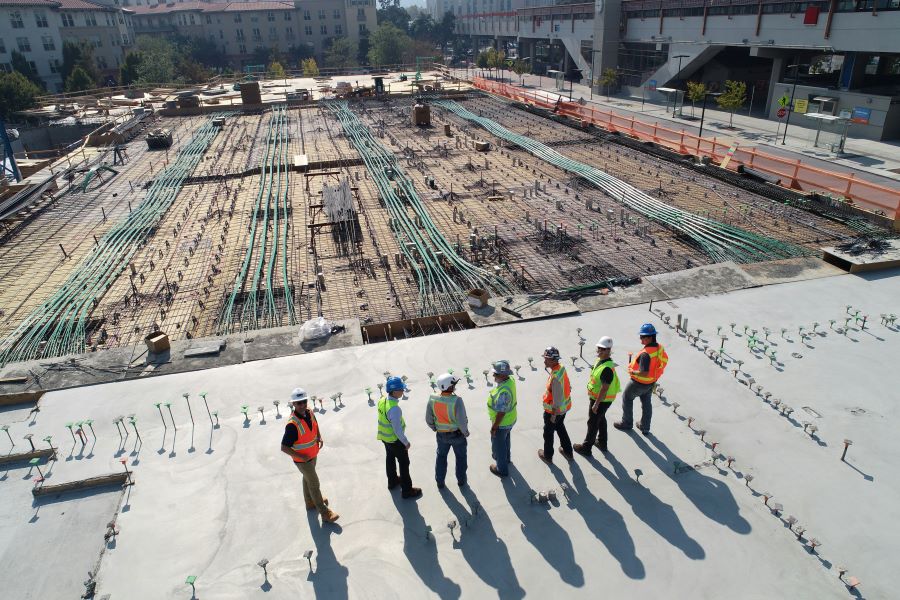Construction projects, whether it’s building a new home, renovating an existing property, or developing land, often require substantial financial investment. Construction loans serve as a crucial financing tool, providing borrowers with the capital needed to fund these projects. In this comprehensive guide, we’ll delve into the definition, functionality, examples, advantages, considerations, and tips for navigating construction loans in the UK.
What is a Construction Loan?
Construction loans are specialised forms of financing designed to fund the construction or renovation of properties. Unlike traditional mortgage loans, which provide funds upfront for the purchase of a property, construction loans disburse funds in stages throughout the construction process. Here’s an overview of the key aspects of construction loans:
Defining Construction Loans: An Overview of Financing for Building Projects
Construction loans provide borrowers with the necessary funds to cover the costs of construction, including materials, labour, permits, and other expenses associated with building or renovating a property.
Key Features and Characteristics of Construction Loans
Construction loans typically have unique features, such as interest-only payments during the construction phase, a draw schedule to disburse funds as construction progresses, and a conversion option to permanent financing upon project completion.
Different Types of Construction Loans
There are various types of construction loans tailored to different types of projects. Construction-to-permanent loans finance the construction of a new home, renovation loans fund home improvement projects, and land development loans provide financing for acquiring and developing land.
How Construction Loans Work
Understanding the mechanics of construction loans is essential for borrowers planning to undertake construction projects.
Read more: How to get personal loans for the self-employed in India?

Loan Application and Approval Process:
Borrowers apply for construction loans through lenders, providing detailed project plans, cost estimates, and financial documentation to support their loan application. Lenders evaluate the borrower’s creditworthiness, project feasibility, and construction experience before approving the loan.
Disbursement of Funds: Understanding the Draw Schedule and Payment Process
Construction loans disburse funds in stages, known as draw periods, based on the progress of construction. Borrowers submit draw requests to the lender, who inspects the construction site and releases funds accordingly. The draw schedule typically includes milestones such as foundation, framing, and completion.
Managing Interest Payments and Loan Terms During the Construction Phase
During the construction phase, borrowers typically make interest-only payments on the disbursed loan amount. Once construction is complete, the loan may be converted to permanent financing, with regular principal and interest payments based on the loan’s terms.
Read more: How to get an unsecured personal loan?
Examples of Construction Loans
Construction loans cater to a variety of construction projects, each with its own unique financing requirements.
Construction-to-Permanent Loans: Financing for New Home Construction Projects
Construction-to-permanent loans provide funds for building a new home from the ground up. Borrowers can secure financing for land acquisition, construction costs, and permanent mortgage financing, all in one loan package.
Renovation Loans: Funding for Home Renovation and Remodelling Projects
Renovation loans finance home improvement projects such as kitchen remodels, bathroom renovations, or additions. These loans allow borrowers to access funds based on the projected value of the renovated property.
Land Development Loans: Financing for Land Acquisition and Development Projects
Land development loans provide funding for acquiring and developing land for residential or commercial purposes. Borrowers can use these loans to cover costs such as site preparation, infrastructure development, and zoning approvals.
Read more: What are pre-approved personal loans?
Advantages of Construction Loans
Construction loans offer several benefits for borrowers undertaking construction projects, including:
Tailored Financing Solutions for Building Projects of All Sizes
Construction loans provide flexible financing options tailored to the specific needs of each construction project, whether it’s a small renovation or a large-scale development.
Flexible Payment Options and Draw Schedules to Accommodate Construction Timelines
Borrowers can structure their loan payments and draw schedules to align with the construction timeline, ensuring funds are available when needed to keep the project on track.
Potential Tax Benefits and Financial Incentives for Construction Projects
Borrowers may be eligible for tax benefits or financial incentives associated with construction projects, such as deductions for mortgage interest or tax credits for energy-efficient upgrades.
Considerations Before Applying for a Construction Loan
Before securing a construction loan, borrowers should carefully consider several factors to ensure the success of their project and the affordability of the financing.
Assessing Project Viability and Feasibility: Conducting Due Diligence Before Securing Financing
Borrowers should conduct thorough research and feasibility studies to assess the viability of their construction project, considering factors such as market demand, construction costs, and potential risks.
Understanding Loan Terms, Interest Rates, and Repayment Options
Borrowers should carefully review the terms and conditions of the construction loan, including interest rates, repayment options, and any fees or charges associated with the loan.
Working with Experienced Contractors and Professionals to Ensure Project Success
Borrowers should enlist the services of experienced contractors, architects, and other professionals to oversee the construction project and ensure it is completed on time and within budget.
How to Navigate the Construction Loan Process
Navigating the construction loan process requires careful planning, communication, and coordination between borrowers, lenders, and construction professionals.
Building a Strong Loan Application: Providing Plans and Financial Documentation
Borrowers should prepare a comprehensive loan application package, including detailed project plans, cost estimates, financial statements, and any other documentation required by the lender.
Communicating Effect
Maintaining open and transparent communication with lenders and contractors is essential to address any issues or concerns that may arise during the construction process and ensure the project stays on track.
Monitoring Construction Progress and Managing Budgets to Mitigate Risks
Borrowers should closely monitor construction progress, manage budgets, and address any challenges or delays promptly to mitigate risks and ensure the successful completion of the project.
Conclusion
Construction loans play a vital role in financing construction projects, providing borrowers with the capital needed to bring their visions to life. By understanding the definition, functionality, examples, advantages, considerations, and tips for navigating construction loans, borrowers can make informed decisions and successfully finance their construction projects. With careful planning, effective communication, and diligent oversight, borrowers can build their dream homes or commercial properties with confidence and financial stability.
But what if you simply want a small personal loan and don’t want to go through all these challenges? Easy! You just have to apply for your personal loan by Airtel Flexi Credit from Airtel Finance. Apply through the Airtel Thanks bill payments app to get a personal loan with low interest rates, relaxed eligibility requirements, pay on your own EMI terms and much more.



